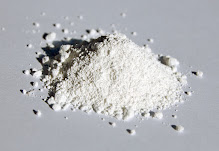Rediscovery of the Roof
As concerns about the environment and energy are raised, there are many movements that even individuals make a small contribution. Solar panels are a prime example, and they are becoming more common in private homes than they used to be. One important technology that has not yet been actively commercialized is hidden in the roof. Different types of roofs, in color and style, can be easily seen in countries where there are more dwellings in the form of houses rather than apartments. A research has revealed the potential of roofing tiles to turn every house into a spot for clean air.
HOW
UC researchers found that titanium dioxide, a chalky-white compound, breaks down the nitrogen oxides into much less harmful compounds. Ordinary clay roof tiles sprayed with titanium dioxide removed 88% to 97% of nitrogen oxide pollution from the air. Using titanium dioxide coating technology, a thick coating of material on roof tiles reduces 97% of target greenhouse gases, while a thinner, cost effective coat still reduces the target gases by 88%. This means that it could cost just five dollars to coat an entire roof with the purifying compound. One home could remove 21g of nitrogen oxide a day, which is the equivalent of what a car releases driving 18,000 km. Widespread application would allow every home in the world to become a mini-air purifier. Further, one company suggests that roof tiles can be made from 50 percent recycled content, allowing the expected effect to be greater.
WHERE
The researchers calculated that if 1 million roofs were sprayed with the smog-eating compound they could remove 21 tons of nitrogen oxides from the air each day. That’s about 4% of the roughly 500 tons of nitrogen oxides emitted a day in California’s South Coast air basin, the nation’s smoggiest region that includes heavily populated areas of Los Angeles, Orange, Riverside and San Bernardino counties. By removing substances that deteriorate air quality, people can feel the improved air. The effectiveness was demonstrated in the case of a paving block in the Netherlands coated with titanium dioxide. The technology could be used not only in California, but also in countries where smog is a serious problem, such as Beijing and Pakistan. The technology has so far been focused on detached houses rather than apartments, so Western regions or cities with more houses with roofs will be the main target.
WHEN
Titanium dioxide roof tiles already exist commercially but have not been universalized due to several limitations. In the case of investigation of numerical values, most of the data are measured in the laboratory. In other words, there are few cases where the effectiveness of this technology has been measured in reality. Researchers are continuing to experiment with the technology to make it work in real life, and further research into possible colors that can be used in a variety of homes. Their hope is to find ways to use titanium dioxide to apply it to walls, highways and dividers, reducing air pollution from traffic jams. Just as solar panels have taken a long time to research and implement, this technology won't be born right away. But just as solar panels have brought small and big changes to our world, we believe that this titanium dioxide technology can too. So we can't help but wait, believing and expecting that this technology will bring us a better world. However, there are already commercially available products, so it is only a matter of time before the improved products go on our roof.
"Environmental pollution is an incurable disease. It can only be prevented." -Barry Commoner



Comments
Post a Comment